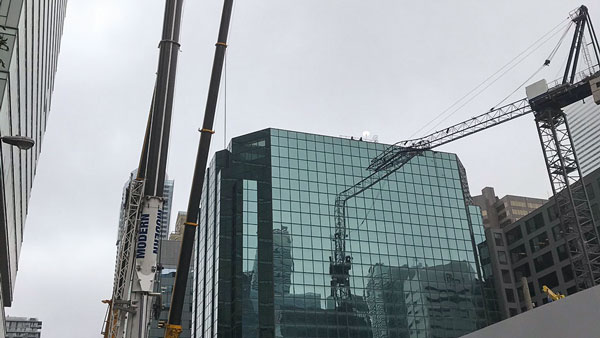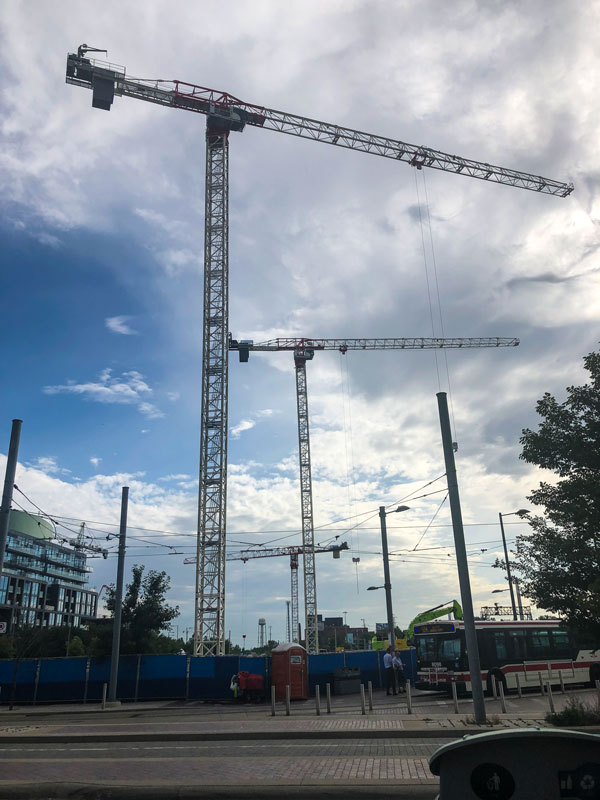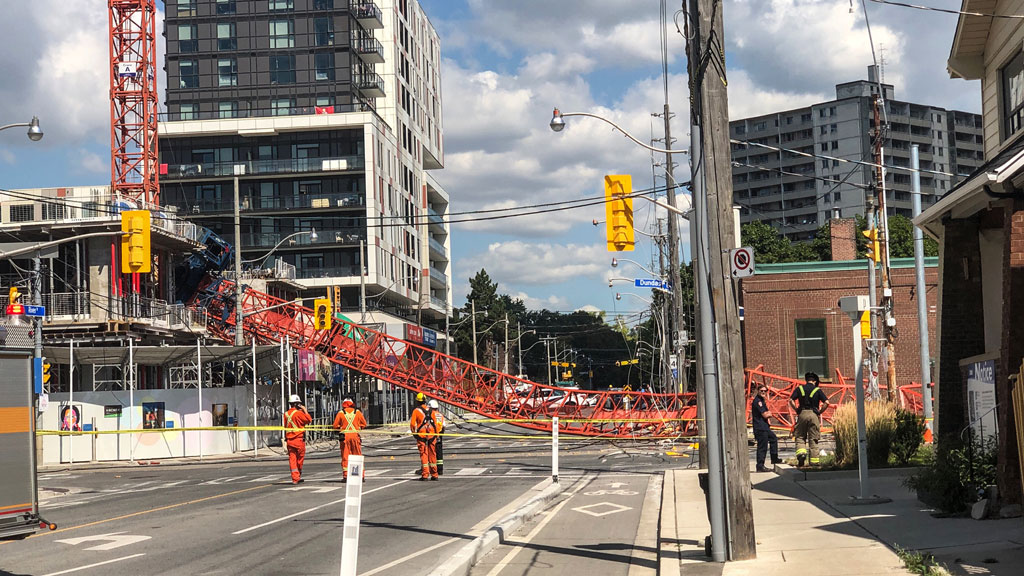Ontario’s Ministry of Labour, Training and Skills Development is cracking down on tower crane safety this fall in the aftermath of two crane collapses in Toronto this summer.
The ministry’s senior manager of construction health and safety Brian Barron noted that mishaps involving cranes have significant potential to cause injuries or deaths in addition to damage to property, prompting the call for a special safety blitz from Labour Minister Monte McNaughton. Barron said the ministry, which has 153 inspectors in its construction inspection pool, hopes to visit all 200-plus tower crane sites across the province in the four-month initiative, with extensive inspection duties generally involving climbs up most cranes.
“This is one of the most heavily used pieces of equipment on a construction site,” commented Barron. “From the time they are erected to the time they are taken down, they run pretty well the entire shift. In some cases they run six or seven days a week and they are effectively doing all the lifts, so you can appreciate the fact they are in heavy use, lifting extremely heavy loads for the most part, so it is very important that these pieces of equipment are maintained and inspected on a regular basis.”
The ministry has several different jobsite inspection programs targeting trending hazards or regional concerns, and sites with cranes are routinely inspected otherwise, but the two incidents this summer sounded an alarm. In July, a crane at a PCL site near Simcoe and Wellington streets hit an adjacent building and less than a month later, a crane at a Daniels site fell into the intersection of River and Dundas streets.

Barron said the investigations into the two incidents are complex and no conclusions as to the cause have yet been reached.
“The bottom line is, our mandate is to ensure that the Occupational Health and Safety Act (OHSA) and construction regulations are being complied with, we monitor that compliance,” he explained. “When you get a scenario when two tower cranes go down, they are big incidents. It is important to be able to react quickly and to ensure these pieces of equipment are inspected thoroughly and are in compliance.”
Tower cranes have a long life, Barron said, noting it is not uncommon to see a tower crane in use for 30 years.
“They are pieces of equipment that need a fair bit of attention to make sure they’re operating right, that all the structural elements are intact, that they are operating mechanically and electrically properly.”

Barron said the inspection of each site takes almost a full day.
It generally starts off with an administrative review, including drawings of the different configurations the crane will be placed in.
The inspector then reviews the required testing logs and inspects various components of the crane including non-destructive testing of welds and other connection points to ensure
that integrity is maintained and there are not cracks or other small defects.
Next might come a visual inspection around the base, including checking electrical connections.
Then comes the climb.
“They are going to climb the crane and will be looking for compliance with the act and regulations as they climb the tower crane. They will go up, they are going to review the logbook for the crane operator to make sure they have done their tests. There is a requirement to do weekly tests to test the functions of the tower crane,” Barron said.
There will also be discussions with swampers, who do rigging and signalling and monitor operations through radios.
There will also be procedural run-throughs to ensure the tasks planned will not run afoul of other risks such as overhead power lines.
“In the case of downtown Toronto, there are other buildings that may be in the way, so to stop the crane from slewing or spinning into those buildings,” Barron explained.
“They are going to be looking at a whole range of different topics. It is a very complete and detailed inspection.”
Besides the OHSA general duty requirements and specific crane regulation requirements, inspectors also aim to ensure that manufacturer’s equipment manuals for proper use and operations related to the equipment’s intended use are being adhered to, Barron said. Operators must have certificates of qualification to operate a tower crane and those will be checked as well.
Enforcement measures include various orders including stop work orders or there could be charges under the act.
Barron said four months has been allotted to the blitz because it has been a busy time for staff, with continuing COVID-related inspection still a priority.
He related that he has seen some highly unusual safety violations during his 16 years on the job, including the time that crews installing spray foam insulation thought they could comply with safety protocols by wearing bags over their heads, but in general compliance is much better today than in 2004.
“I see a surprising level of innovation where a lot of companies have come up with advanced health and safety systems to protect their workers to ensure the workers have the highest level of training.”
Follow the author on Twitter @DonWall_DCN.










Recent Comments
comments for this post are closed